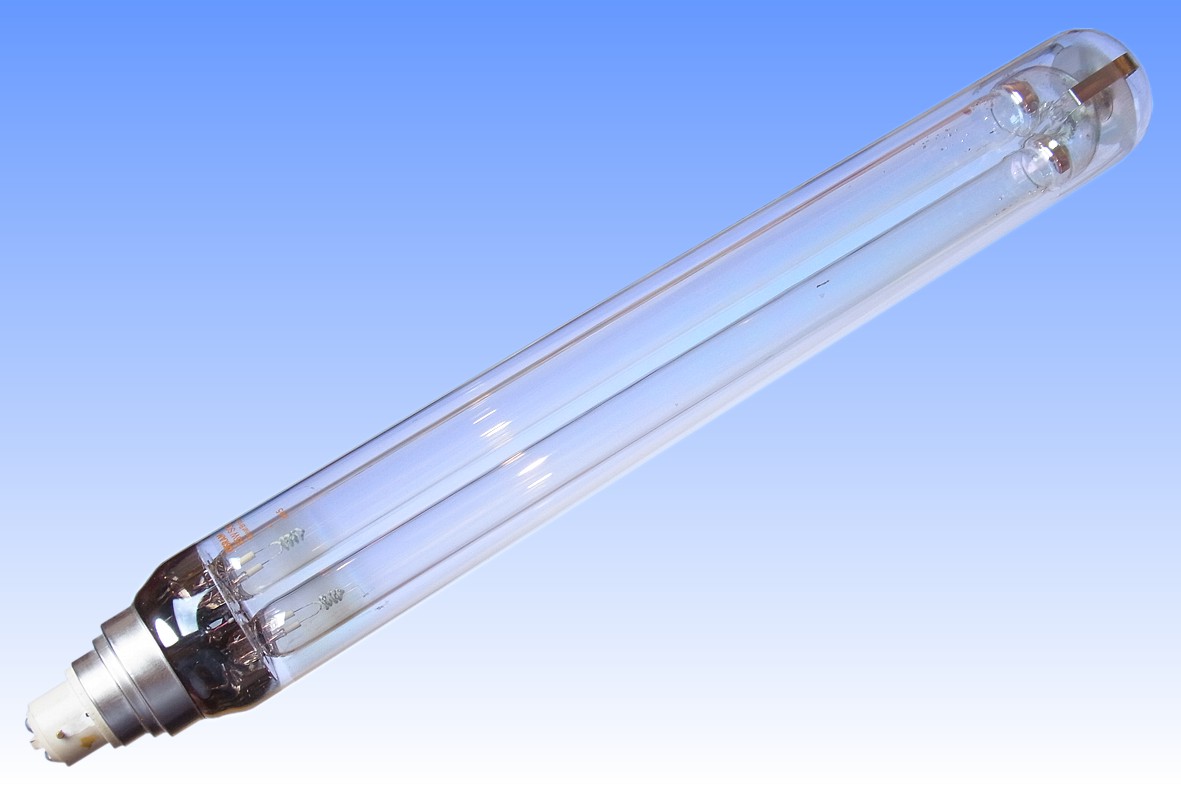
|
Osram SuperSOX 55W - 5th Generation |

The first generation lamps from 1964 employed a heat-reflective coating of tin oxide and had dimpled discharge tubes. These were superseded in 1967 by the 2nd generation design in which the IR coating was changed to the superior indium-tin oxide. Before 1969 the 3rd generation lamps had been introduced, in which the dimples were eliminated and replaced by ring-shaped sodium reservoirs around the U-bend. In parallel a new top support was introduced to yield a mechanically more robust design, in which the U-bend was held on an electrically insulated tube of steatite ceramic, and a large mica disc was provided to offer some thermal insulation and reduce heat losses in the area of the U-bend. The 4th generation of the late 1970s introduced a large diameter nickel plated steel disc at the U-bend end of the lamp to achieve improved thermal insulation of the discharge tube.
This lamp is representative of the 5th generation design, introduced in the mid 1980s and in which relatively minor refinements were made. The small ceramic insulator which supports the discharge tube has been changed to glass, and the side fingers of the top clip which press against the outer jacket have dimpled ends, to reduce the possibility of scratching the glass during lamp assembly. The cap is of a type manufactured by Lamp Caps Ltd., and consists of an off-white phenolic resin moulded into a nickel plated brass shell of modified construction - similar to the alkyde polymer caps introduced some years earlier on Philips lamps.



| Manufacturer: | Osram GmbH | |
| Lamp Power: | 55 Watts | |
| Lamp Current: | 0.59 Amps | |
| Lamp Voltage: | 109 Volts | |
| Cap Type: | BY22d | Phenolic Insulator |
| Bulb Type: | T-50 | T-16 in eighths/inch |
| Bulb Finish: | Indium-tin oxide film | Soda-lime glass |
| Electrodes: | CCC-4 Beehive | Black W + BCT emitter |
| Arc Length: | ||
| Atmosphere: | Na | 99% Ne, 1% Ar | Outer: Hard Vacuum |
| Luminous Flux: | 7,800 lm (@ 100 hrs) | 7,600 lm (average) |
| Luminous Efficacy: | 142 lm/W (@ 100 hrs) | |
| Colour Temperature & CRI: | CCT: 1700K | CRI: Ra -44 |
| Chromaticity Co-ordinates: | CCx: 0.574 | CCy: 0.425 |
| Rated Lifetime: | 12,000 hours | 70% survival |
| Warm-up & Re-strike time: | 8-12 minutes | Instantaneous |
| Burning Position: | Vertical Cap Up ± 110° | |
| Overall Length: | 425 mm | 163/8 inches |
| Light Centre Length: | 235 mm | 91/4 inches |
| Factory: | Shaw, Oldham | England |
| Date of Manufacture: | June 1993 | Date Code: oe3 |
| Original / Present Value: | GB £22.39 (1992) | GB £41.38 (2014) |
